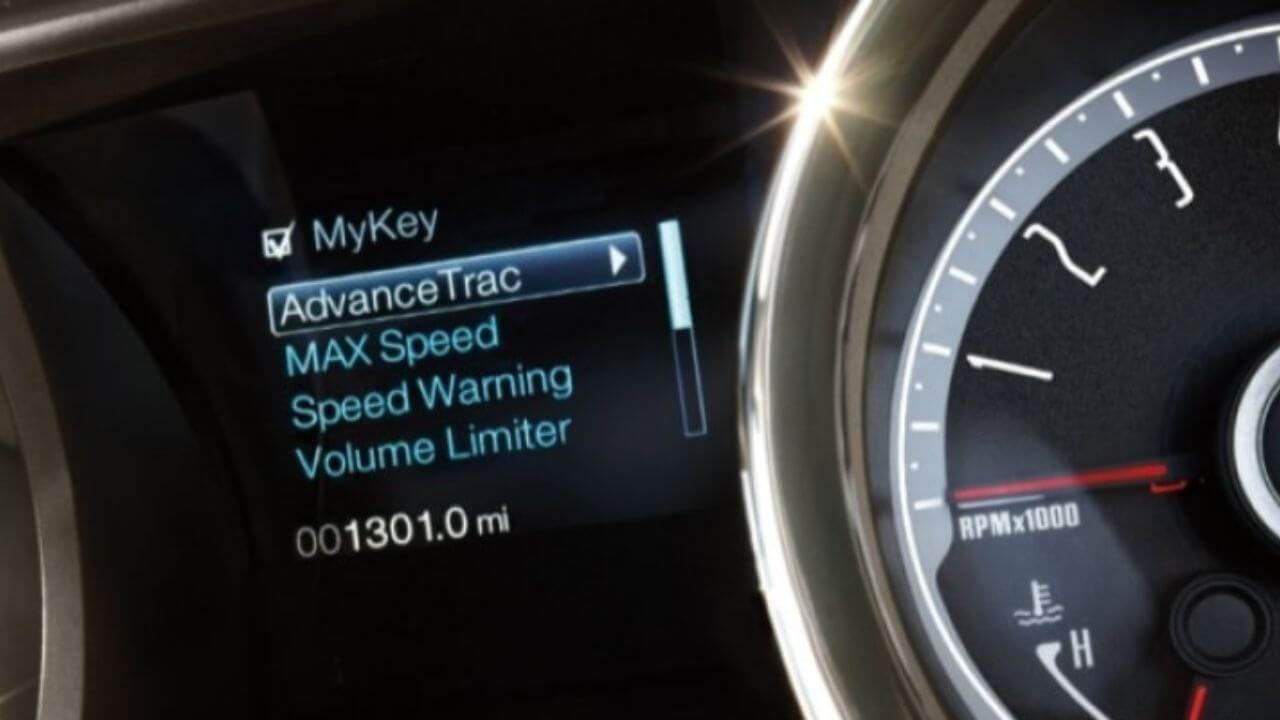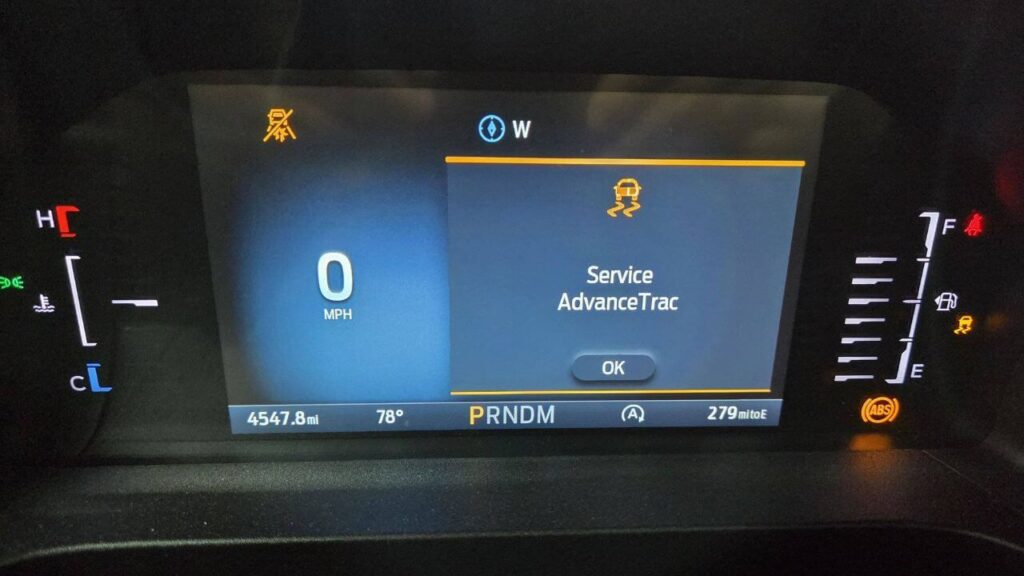Discover how the service AdvanceTrac system enhances vehicle safety and stability by preventing skids and rollovers. Learn common causes, expert insights, and key maintenance tips for Ford’s advanced traction control technology.
When the words service advancetrac come up on a vehicle’s dashboard, they signal an important message regarding the vehicle’s electronic stability system. AdvanceTrac is a complex safety feature built into many Ford and Lincoln vehicles to help drivers keep control in different road conditions. This system, which combines tractor control, electronic stability control and roll stability control, plays a pivotal role in the prevention of skid, rollover and loss of control while driving. For drivers, especially those dealing with slippery or difficult environments, understanding service advancetrac is essential to both vehicle performance and safety assurance. This blog explores in-depth what the system is about, how it works, some common problems that cause service notifications and why it’s so important to maintain it.
What is Service AdvanceTrac?

The system continuously monitors the vehicle’s behavior by sensors that track wheel speed, steering angle, yaw rate, and lateral acceleration. If the system senses that there is a deviation between where the driver wants to go and where the vehicle actually is-moving faster or slower or slipping or skidding-then the system takes action to bring the vehicle back to stability by applying brakes to certain wheels or reducing engine power to help steer the vehicle back to stability. When the service advancetrac warning comes up, it usually means that one or more of the sensors or other components in this complex system may be malfunctioning or require some diagnostics.
How Does AdvanceTrac Work?

When a risk of losing traction or stability is ascertained, AdvanceTrac instantly intervenes. This intervention includes a number of actions, selective braking of individual wheels to counter skid, throttling of engine power to prevent wheel spin and brake pressure is adjusted to keep the car directionally controlled. The roll stability control component goes further to ensure that the vehicle isn’t knocked over during sharp turns or evasive maneuvers using gyroscopic sensors to monitor the rate of roll and apply corrective measures quickly.
This real-time monitoring and intervention occurs seamlessly and continuously, providing drivers with a much higher degree of confidence and safety with no manual activation needed. However, if the system detects an internal fault, it will cause the service advancetrac light to illuminate to warn drivers that the operation of the stability system is not fully operational.
Importance of Service AdvanceTrac to Drivers
Driving dynamics can change drastically because of road conditions such as rain, ice, snow or gravel. AdvanceTrac offers additional layers of safety to manage these hazards in an effective way. For example, when it’s slippery or wet, it helps restore traction by braking spinning wheels or lowering engine power. This technology enhances the handling of vehicles and decreases the chances of skidding, keeping control of vehicles higher in bad weather or emergency conditions.
An expert in automotive safety technology emphasizes,
“Electronic stability control systems such as AdvanceTrac have revolutionized the safety of our automobiles by dramatically reducing the risks of rollover as well as providing a way of intuitively intervening during critical loss of control events.” Drivers are now provided with a greater confidence in stability, particularly in unpredictable driving situations.” This highlights the importance of keeping the AdvanceTrac system in perfect working condition to maximize safety benefits.
Moreover, the roll stability control function built into the system takes on an exceptionally important role for SUVs and vehicles with higher centers of gravity. By tracking the roll rate of the vehicle and having the ability to act before a potential rollover event can occur, AdvanceTrac with RSC can prevent dangerous accidents that otherwise would be difficult to control.
Typical Causes of Service AdvanceTrac Alerts
When a service advancetrac warning lights up, a number of underlying problems could be to blame. Some common causes are malfunctioning wheel speed sensors which can sometimes get dirty or damaged and send improper data to the control module of the system. Faults can also occur because the yaw rate sensor or steering angle sensor loses calibration or ceases to operate correctly.
Other factors like the malfunctioning of ABS (Anti-lock Braking System) or failure of the hydraulic unit affects the system’s capacity to regulate the pressure of the brakes with precision. Also, inconsistencies in the tire pressure or tread depth or tire size mismatch may affect the sensor readings and create the system to trigger a warning.
Sometimes, environmental factors, such as debris that interferes with the operation of the sensor or wiring problems within the network of the system, may cause faults. Since AdvanceTrac works closely with the vehicle’s engine control module, engine performance irregularities can also indirectly affect system operation, and a complete diagnostic by professionals is required when the warning light turns on.
Diagnosing & Servicing AdvanceTrac Issues
Proper diagnosis of the service advancetrac warning requires advanced diagnostic tools and knowledge of Ford’s stability control systems. Mechanics use a scan tool to read fault codes stored in the vehicle’s computer, pinpointing the exact sensor or module creating the problem. Once found, repairs can consist of sensor replacements, recalibration, cleaning or in rare cases, more complex component replacements such as the ABS control module or hydraulic brake unit.
Vehicle owners are advised not to disregard the warning light as it is detrimental to safety to drive without a fully working stability control system. Maintaining the condition of the tires, correct tire pressure, and regular check of braking system adds to the long-term efficient functioning of AdvanceTrac.
In certain situations, the system could need to be temporarily disabled in situations where the system gets stuck in snow, mud, or sand to allow the wheels to spin in an attempt to get the vehicle unstuck. However, this is only to be performed after the manufacturer guidelines to prevent unintentional safety hazards.
Interfacing With Other Safety Technologies
Importantly, AdvanceTrac doesn’t work in isolation. It works in tandem with other vehicle safety systems such as Anti-lock Braking System (ABS), Traction Control System (TCS) and various driver assistance systems. This integration is important to ensure that the vehicle’s overall safety ecosystem works together in unison and the vehicle’s traction is optimised, skids are reduced and stability is improved in a comprehensive manner.
The system’s advanced algorithms enable communication between various safety components without issues, redistributing power between wheels on all-wheel-drive vehicles, or communicating with braking assistance systems when the vehicle has to stop suddenly.
Such collaboration is an example of the emphasis in modern automotive engineering on the development of connected, intelligent safety networks that react dynamically to changing driving conditions and ensure driver and passenger safety better than isolated systems.
Results: Why You Should Take Service AdvanceTrac Seriously
The service advancetrac indicator is one of the most important and requires immediate attention. AdvanceTrac technology is a new peak in electronic stability control systems and brings a new level of confidence and safety through smart and real-time interventions in risky situations. To ignore this warning could result in an improper handling and increased risk of an accident, particularly in poor road conditions.
Maintaining the AdvanceTrac system by attending to faults as soon as they occur, having regular vehicle maintenance and understanding how it operates ensures the system will be able to faithfully do its job. It gives drivers greater traction, stability, and rollover prevention — critical to both everyday and emergency driving.
In essence, Service AdvanceTrac isn’t just a system message but a reminder that modern vehicle safety is an ever-evolving synergy of technology and driver awareness. Adopting this technology and properly maintaining it does a lot to keep the roads safer and the journeys more confident.

